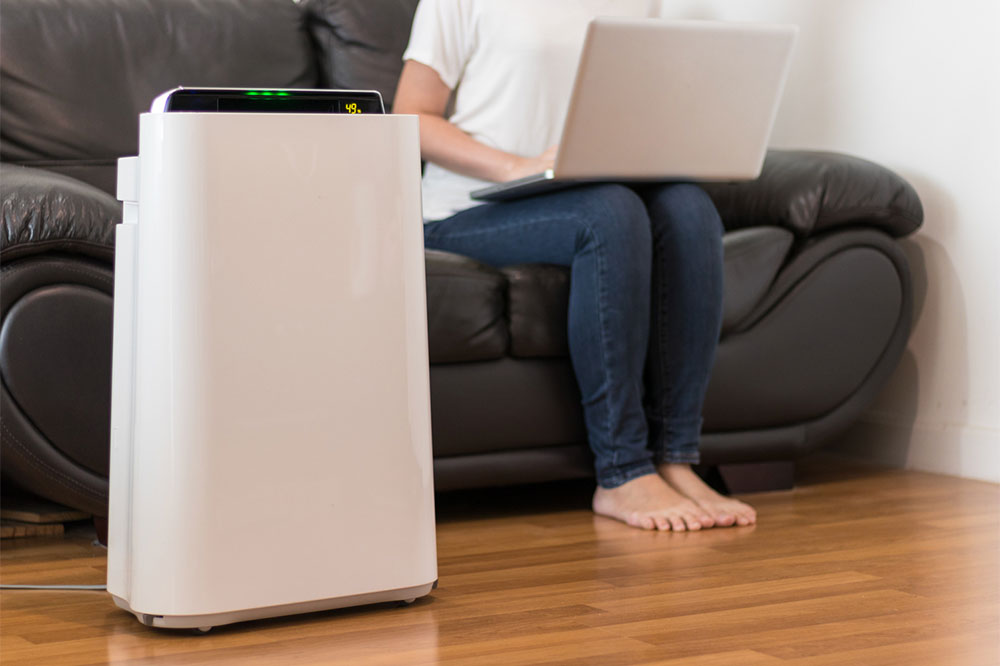Top 7 indoor purifiers for improving air quality

Air quality in and around structures can be affected by pollutants like asbestos, carbon monoxide, lead, nitrogen dioxide, radon, pesticides, indoor particulate matter, tobacco, volatile organic compounds, and wood smoke. Purifier devices are the safest and most trusted options for improving air quality. The country’s air purifier market was 2.17 billion in 2020, with a growth estimation of 8.6% by 2028. Here are seven of the best indoor air purifiers to consider for your home:
Blue Pure 211+ by Blueair
Blueair air purifiers are reliable, and the Blue Pure 211+ can remove a wide range of pollutants and particles trapped in your home. This device has a fabric filter for dust and larger particles and a High-Efficiency Particulate Air (HEPA) filter for smaller particles like mold and bacteria. Another filter is activated by carbon that can remove other dust and odors. Blue Pure 211+ is a compact machine that has proven effective for removing airborne pollutants across 540 sq. ft., and replacements will cost around $70.
Airmega AP-1512HH by Coway
Coway has been leading the air purifier market for quite some time. The Airmega AP-1512HH is effective for a 361 sq. ft room size and has four filters: HEPA, washable, odor, and bipolar ion. This air purifier is the only one with ionizing functions, along with a programmable timer, four fan speeds, and a filter indicator light. It is a compact machine and one of the market’s most highly rated and reviewed air purifiers. Replacement costs are also low. The company runs out of stock frequently; if you are keen on this, track its availability.
Macro Pro True HEPA Air Purifier by DREO
DREO’s Macro Pro is an ideal low-cost air purifier with ultra-fine, HEPA, and pelletized activated carbon filters that can remove odors caused by dogs and a lot of dust. The device has three fan speeds and three additional and separate modes for sleep, turbo, and auto. DREO is fitted with sensors that can adjust the mode and speed settings based on the current air quality in the room. The replacements cost around $30.
Core 400S by Levoit
Levoit’s Core 400S has three filtration stages: nylon, an H13 True HEPA, and activated carbon. The maximum effective room size for this air purifier is 403 sq. ft. You may have to replace the filter every six months for one year at about $50. Levoit claims the Levoit Core 4005 can capture about 99.97% of airborne particles and close to 99.99% of viruses and bacteria. This device can also capture smoke, fumes, pet odors, and cooking smells.
HM400 HealthMate® by Austin Air
If you want an air purifier that works in larger room sizes and is durable, you can consider the Austin Air HM 400 Healthmate. This device can remove pet dander and chemical and gaseous pollutants for a large room size of 938 sq. ft. The Austin Air HM 400 Healthmate has already been tested and proved to remove volatile organic compounds. While this air purifier is slightly higher on the cost side, it is a durable machine.
Pure Cool™ Purifying Tower Fan and TP04 Air Purifier by Dyson
It is a standing purifying tower fan that detects air quality in real-time. The activated carbon filter removes odors and gases, and a Glass HEPA filter captures minute allergens and pollutants. This smart machine delivers pure air throughout the room at 77 gallons per second, and it can be operated through a voice-enabled app. Dyson’s combination of purification and powerful fan speed makes this product a must-buy. You can set it to nighttime mode, which functions in quiet settings with a dimmed display.
HPA300 True HEPA Allergen Remover by Honeywell
Honeywell’s HPA 300 can purify an area of 465 sq. ft. with a disposable pre-filter and a true HEPA filter. This portable device is easy to use, has four-speed settings, and works almost silently, even in high fan speed settings. Allergens trapped in the house are effectively removed thanks to this durable product. The Honeywell HPA has one of the highest ratings for removing dust, pollen, and smoke. However, the device may need a good amount of maintenance, and replacements are expensive.
The need for air purifiers
The Environmental Protection Agency says that immediate exposure to household pollutants can lead to headaches, fatigue, dizziness, and irritation in the eyes, nose, or throat. While treatment can cure them, the symptoms may relapse when they come back home. The impact of air quality on people with allergies and sensitivities could be more than cold-like symptoms. Prolonged and continuous exposure to household pollutants can cause respiratory diseases, heart diseases, and cancer. Hence using an air purifier reduces the risk of such diseases. In addition, it can also remove microorganisms and protect you from viral and bacterial infections.
Other methods to improve air quality
Apart from using an air purifier to remove existing pollutants, pay attention to the household things and remove potential pollutants. Keep the house well ventilated. Check pipes, tanks, and water supply channels for any water leaks that may cause molds. Use professional cleaners to clean your home thoroughly.